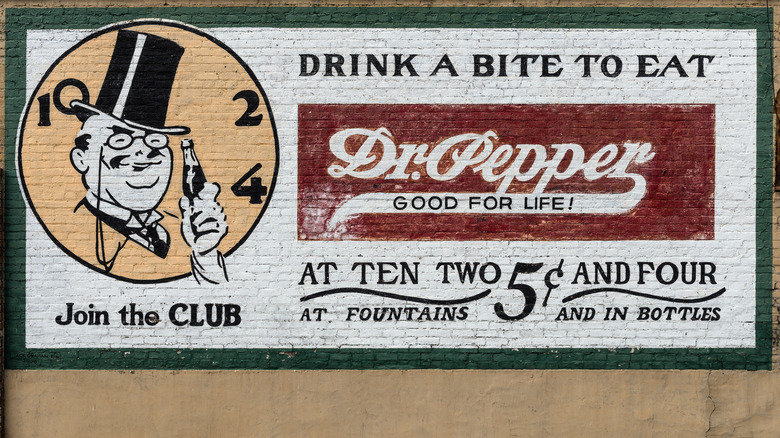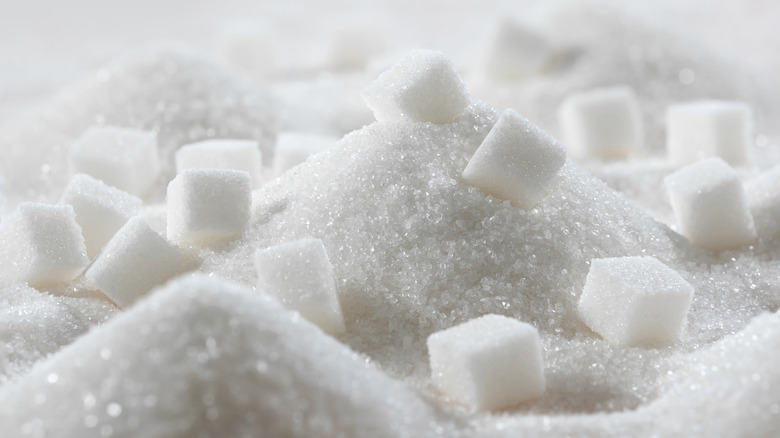The Story Behind Dr. Pepper's 'Drink A Bite To Eat' Slogan
It may sound a little strange to the ear these days, but Dr. Pepper's one-time slogan, "Drink A Bite To Eat At 10, 2, and 4," was once one of the most instantly recognizable parts of the iconic soda brand. While it may seem like a simple attempt to increase sales, there's actually more to the story of this marketing campaign.
The slogan has its roots in the 1920s and 1930s, in what was then cutting-edge research into the way the human body works and how food affects it. These studies not only proved the link between sugar and energy but also discovered what they claimed were natural dips in every person's energy around 10:30 a.m., 2:30 p.m., and 4:30 p.m. Of course, Dr. Pepper argued the best way to combat these periodic slumps was one of its sodas, which would provide the sugar equivalent of "a bite to eat."
The campaign was such an integral part of Dr. Pepper at the time that the numbers were even included on the label although slightly askew from their traditional spots on the clock.
Good for marketing, bad for your health
It's not clear exactly how much sugar was included in each of these drinks. However, the modern version of Dr. Pepper contains 39 grams of added sugar per 12-ounce can. That's more than the entire suggested amount of added sugars per day, according to The American Heart Association. So it's safe to say this wouldn't be good advice from a health perspective these days and likely wasn't back then either.
Keep in mind that old-school soda bottles were typically just 6.5 ounces, just over half of the current 12-ounce can and less than a third of common 20-ounce plastic bottles. This means drinking three Dr. Peppers per day back then would be just 19.5 ounces of sugary soda instead of the 36-60 ounces today.
Also, while that distinctive, one-of-a-kind taste has remained the same over the decades, one key factor of Dr. Pepper has changed since the heyday of "Drink a Bite to Eat." Like most soft drinks, standard Dr. Pepper is now sweetened with high fructose corn syrup instead of the cane sugar of generations past. However, those who'd like to try something closer to the original "Pepper Upper" can seek out the company's special version of Dr. Pepper made with real sugar.
So there you have it, the origin of one iconic marketing campaign. If you're wondering what happened to Dr. Pepper's "Be a Pepper" slogan, there's an interesting story behind that, too.

